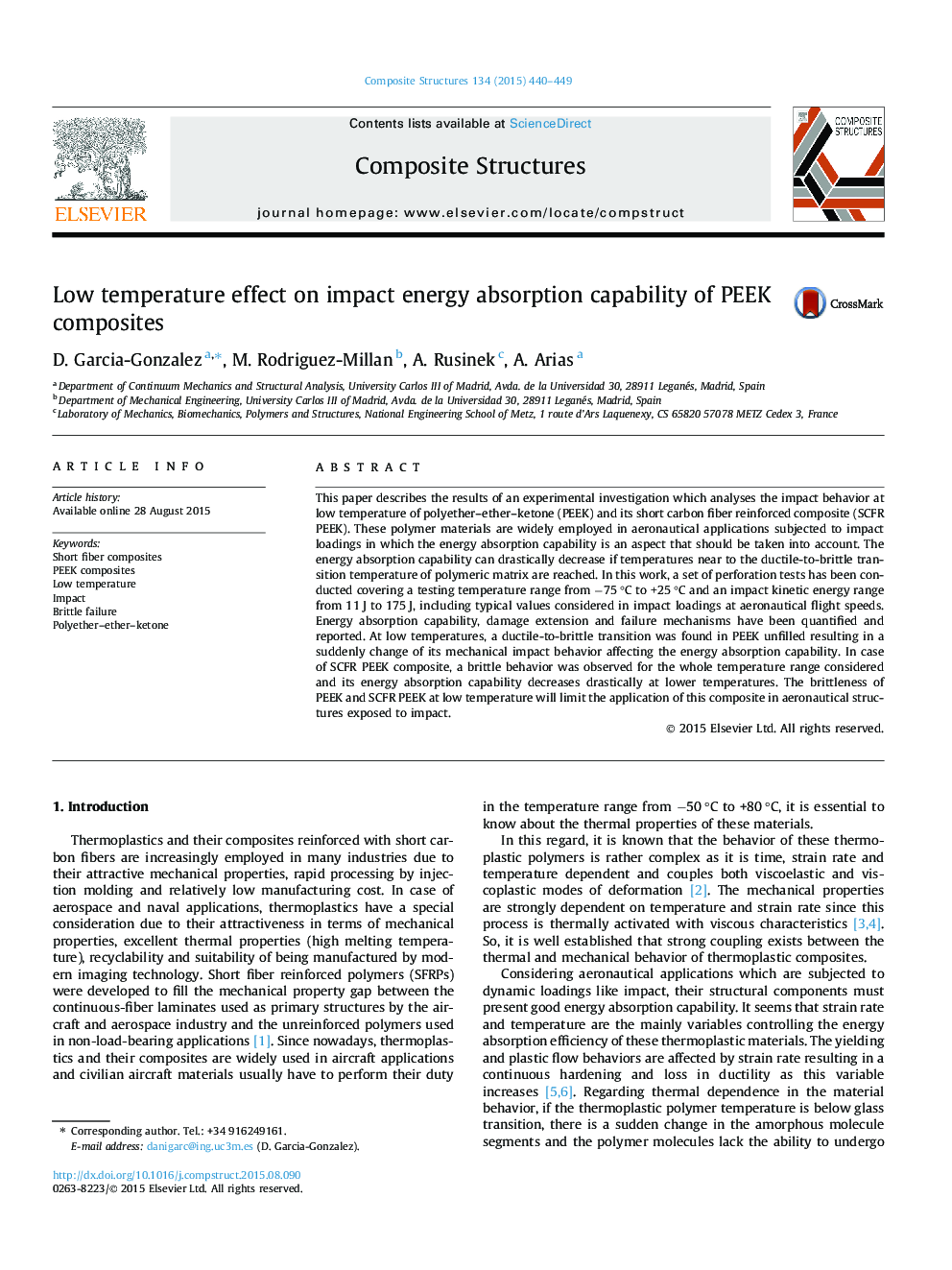| Article ID | Journal | Published Year | Pages | File Type |
|---|---|---|---|---|
| 251006 | Composite Structures | 2015 | 10 Pages |
This paper describes the results of an experimental investigation which analyses the impact behavior at low temperature of polyether–ether–ketone (PEEK) and its short carbon fiber reinforced composite (SCFR PEEK). These polymer materials are widely employed in aeronautical applications subjected to impact loadings in which the energy absorption capability is an aspect that should be taken into account. The energy absorption capability can drastically decrease if temperatures near to the ductile-to-brittle transition temperature of polymeric matrix are reached. In this work, a set of perforation tests has been conducted covering a testing temperature range from −75 °C to +25 °C and an impact kinetic energy range from 11 J to 175 J, including typical values considered in impact loadings at aeronautical flight speeds. Energy absorption capability, damage extension and failure mechanisms have been quantified and reported. At low temperatures, a ductile-to-brittle transition was found in PEEK unfilled resulting in a suddenly change of its mechanical impact behavior affecting the energy absorption capability. In case of SCFR PEEK composite, a brittle behavior was observed for the whole temperature range considered and its energy absorption capability decreases drastically at lower temperatures. The brittleness of PEEK and SCFR PEEK at low temperature will limit the application of this composite in aeronautical structures exposed to impact.
